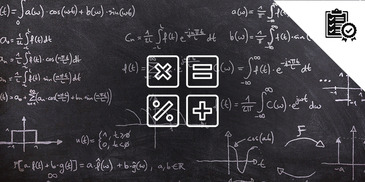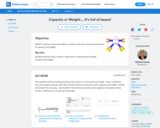
I love blending art and math. I want my students to develop a depth of knowledge for 2D plane shapes and distinguish polygon from non-polygon shapes.
- Subject:
- Mathematics
- Material Type:
- Lesson Plan
- Provider:
- BetterLesson
- Date Added:
- 12/01/2022


I love blending art and math. I want my students to develop a depth of knowledge for 2D plane shapes and distinguish polygon from non-polygon shapes.

Kindergarteners love to identify shapes in their environment. In order to effectively do that, they must be able to recognize different shapes by their specific attributes. In this lesson kindergartners learn about the attributes of a cylinder.

Expose your students to measurement with this lesson containing four centers. Website includes a lesson plan as well a picture and video to implement the lesson.

Students will be using a hands-on approach to learning about length, capacity and weight.

How do we understand the difference between inches and centimeters? Why does measuring a given object in centimeters always give a bigger number than measuring the same object in inches? This lesson includes detailed plans, printable worksheets, and videos of students engaged in the lesson.

Students solve change unknown story problems using a number line. This lesson gives students a new strategy to attach change unknown word problems.

Students love to shop! Students will use their own shopping list to compose a word problem using addition and subtraction with and without regrouping, in order to help them better understand how to problem solve.

This is one of my favorite Open House activities. We use our shapes to create "mystery" glyphs that are hung in the hallway. Families use the legend to guess their child's glyph!

To introduce these terms, students get to learn a little mouse with a LONG name! After reading Chrysanthemum, students look at how long all of their names are and use the terms, "shorter, equal to and longer than" to compare the lengths.

Kindergarteners love to identify shapes in their environment. In order effectively do that, they must be able to recognize different shapes by their specific attributes. In this lesson kindergartners learn about the attributes of a circle.

This lesson will allow the student to work through three stations. The stations will focus on creating and analyzing circle graphs. The students will be using technology to create their graphs along with a hands-on activity using M&M's.

Students love graphing data that they "own". In this plan, the class will select a type of graph and create it using a class survey frequency table. Included in this lesson are videos of the class engaged in the lesson and samples of graphs that students created.

This lesson plan has students creating a model to find the total number of combinations that can be made from groups of objects. Using a model helps students develop a conceptual understanding of multiplication.

Given a set of fractions students will be able to compare unit fractions by using models to determine that the more equal parts there are in the whole, the smaller each part will be. This lesson includes a detailed plan, samples of student work, a link to an interactive practice site, and printable worksheets.

Students will compare numbers using the symbols for "greater than", "less than", and "equal to".....with love. This lesson contains a detailed plan, printable worksheets, and videos of students engaged in the lesson.

Students will compare numbers within 15, using symbols for "greater than", "less than", and "equal to". This lesson contains a printable assessment for this topic.

Students take their understanding of place value to the next level when they compare numbers written in expanded form. This lesson plan includes printable worksheets and a video showing students engaged in the lesson.

Students explore numbers in a variety of ways to understand how to compare three-digit numbers based on an understanding of place value. This lesson includes an interactive number line video, samples of student work, and a printable assessment worksheet.

Students use their knowledge of place value to compare three-digit numbers. This lesson includes a detailed plan, a learning game, a video of students engaged in the lesson, and tiered independent work based on ability levels.

Students will be able to represent the sample space of compound events, and calculate the probability of events using their sample space.